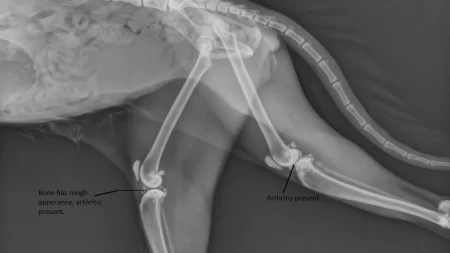There are many possible causes for cats to have bald spots near their ears. Some of them are:
Ringworm: A fungal infection that causes itchy and scaly patches on the skin. It can be treated with antifungal medications.
Alopecia Areata: A condition that causes patchy hair loss due to an immune system disorder. It may resolve on its own or require steroid injections or other treatments.
Flea Allergy Dermatitis: A hypersensitivity reaction to flea bites that causes intense itching and inflammation. It can be prevented by using flea control products and treating the environment for fleas.
Ear Mites: Tiny parasites that live in the ear canal and cause irritation and infection. They can be diagnosed by a veterinarian and treated with ear drops or injections.
Stress or Anxiety: This can make cats over-groom themselves and pull out their hair. This can be caused by changes in the environment, conflicts with other pets, or other factors. It can be managed by providing a calm and enriching environment, reducing stressors, and using pheromone diffusers or supplements.
If you observe bald spots near your cat’s ears, it is advisable to seek veterinary advice to identify the cause and find the optimal treatment.
Can bald spots near a cat’s ears be a sign of aging?
Bald areas around a cat’s ears are generally not an indication of age.
Typically, cats experience normal hair growth throughout their lifetime unless they encounter a health condition that impacts their hair follicles or skin.
Nevertheless, some senior cats might develop hairless spots on bony areas such as their ankles and ears as a natural consequence of aging.
This occurrence is not a disease and does not inflict any discomfort on the feline.
Rather, it is a purely cosmetic concern that may relate to reduced blood flow or hormonal changes in older cats.
Why do some cats have more bald spots near their ears than others?
Certain cats have more bald patches surrounding their ears due to their genetics or breed.
Some breeds like Siamese, Devon Rex, Birman, and Burmese cats, are susceptible to a genetic condition known as hereditary hypotrichosis.
This condition can result in these cats having less hair or sparse hair around their ears, face, and other body areas.
Despite this, hereditary hypotrichosis is not a disease and has no impact on their general health or well-being.
On the other hand, some breeds, such as Sphinx, Elf, Delf, and Bambino cats, are bred to be hairless or have very little hair intentionally.
These cats possess a genetic mutation that either makes them lack hair follicles or have inadequate hair growth.
As a result, these cats require special care to guard their skin against sunburn, colds, and infections. Regular bathing is also necessary to remove excess oil and dirt from their skin.
Can hair loss near a cat’s ears be prevented or treated?
Hair loss near a cat’s ears can be prevented or treated depending on the cause. Some general tips are:
- Keep the ears clean
- Regular vet visits
- Parasite control
- Diet and nutrition
- Stress management
Are bald spots near a cat’s ears more common in indoor or outdoor cats?
Bald spots near a cat’s ears can be more common in outdoor cats than indoor cats because outdoor cats are more exposed to parasites, insects, sunlight, and frostbite that can cause hair loss.
Outdoor cats may also experience more stress and anxiety from territorial conflicts, predators, or environmental changes that can trigger overgrooming and hair loss.
Indoor cats can also develop bald spots near their ears, but they are usually due to other causes, such as allergies, infections, pain, or genetics.
Indoor cats may also have stress or anxiety from boredom, lack of stimulation, or household changes that can cause overgrooming and hair loss.
Do bald spots near a cat’s ears affect their hearing or balance?
No, bald spots near a cat’s ears do not affect their hearing or balance.
The hair on the outer part of the ear (the pinna) does not play a role in sound detection or equilibrium.
The hair on the pinna may help protect the ear from dirt, debris, or insects, but it is not essential for hearing or balance.
The structures that are responsible for hearing and balance are located inside the ear canal and the middle and inner ear.
These structures include the eardrum, the ossicles (tiny bones), the cochlea (the organ of hearing), and the vestibular system (the organ of balance).
These structures are not affected by the hair loss on the pinna unless there is an infection or inflammation that spreads from the outer ear to the inner ear.
Can cats with bald spots near their ears still be shown in cat shows?
It depends on the cause and the extent of the bald spots near a cat’s ears.
Some cat shows may have specific rules or standards for different breeds and categories that may disqualify cats with bald spots or other skin conditions.
Other cat shows may be more lenient and allow cats with bald spots to participate as long as they are healthy and well-groomed.







